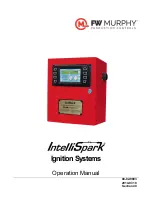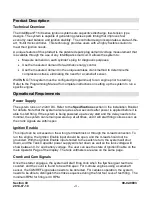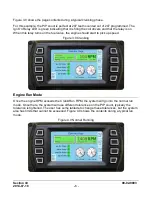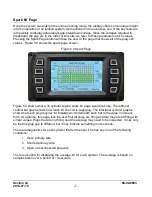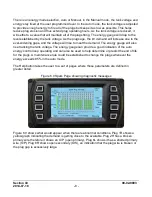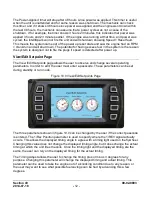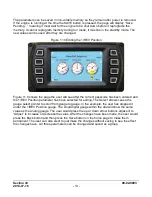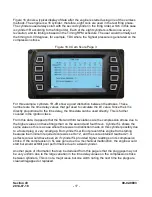
Section 40
00-02-0893
2014-07-18
-
12 -
The Power-Applied timer will stop after 48 hours since power was applied. This timer is useful
when the unit is unattended and for some reason was shut down. The mechanic can check
this timer, and if it shows 48 hours since power was applied and the engine went down within
the last 48 hours, the mechanic can assume that a power cycle was not a cause of the
shutdown. If for example, the timer shows 3 hours 23 minutes, this indicates that power was
applied 3 hours and 23 minutes earlier. If the engine was running at that time, and power was
cycled, the IntelliSpark will not fire the unit and will shutdown showing Speed > Reset fault.
This means the system came out of the power up reset state and saw the engine had an RPM
> crank/run and will shut down. The potential for having excess fuel in the system is the reason
the system is designed not to fire the plugs if speed is detected after power up.
View/Edit Setpoint Page
The View /Edit Setpoints page allows the user to observe and change several operating
parameters. In order to edit, the user must enter a passcode. These parameters can be set
during standby or run mode.
Figure 10.0 View/Edit Setpoints Page
The three parameters shown in figure 10.0 can be changed by the user if the correct passcode
is entered. The 1/Rev Position parameter is used to specify where the 1/REV signal actually
occurs. This allows the displayed timing angle to agree with a timing light used on the flywheel.
Changing this value does not change the displayed timing angle, but it does change the actual
timing at which the unit fires the coils. Once the timing light and the displayed timing are the
same, the user can rely on the displayed timing for the actual timing.
The Timing Adjust allows the user to change the timing plus or minus 3 degrees for any
purpose. Changing this parameter will change the displayed timing and actual timing. This
parameter can be used to take the engine out of a knocking condition due to any reason, or
the user may want to see what possible fuel savings can be had by advancing this a few
degrees.

